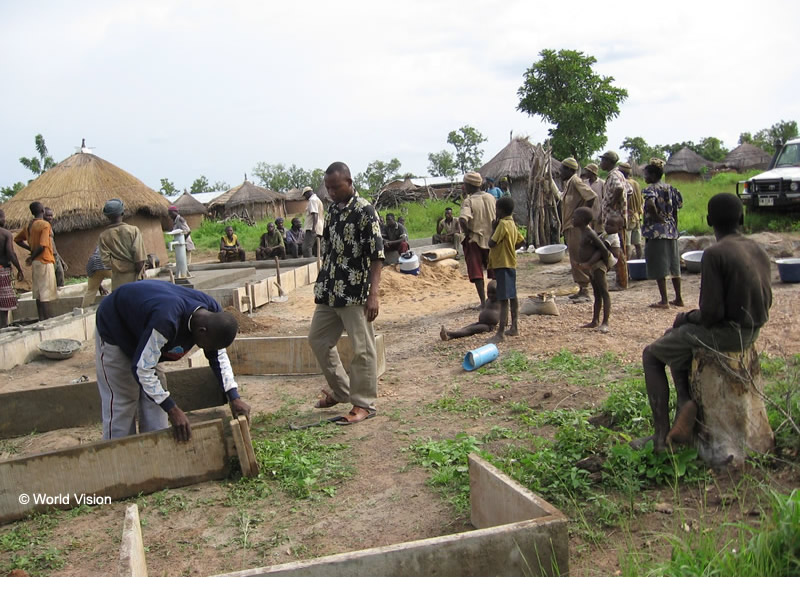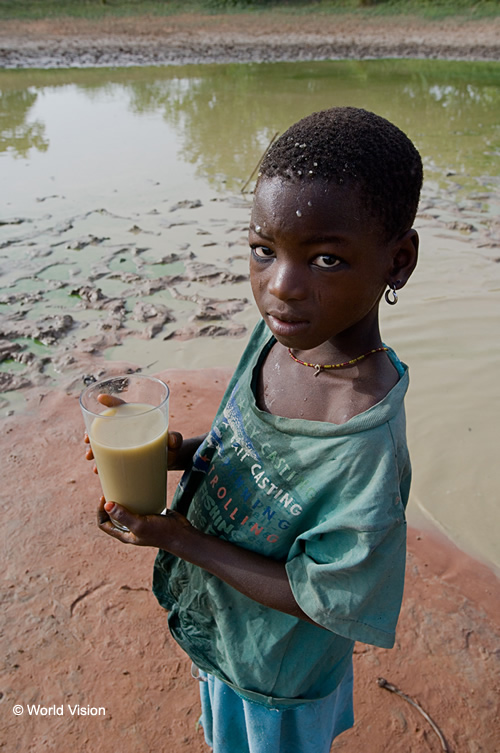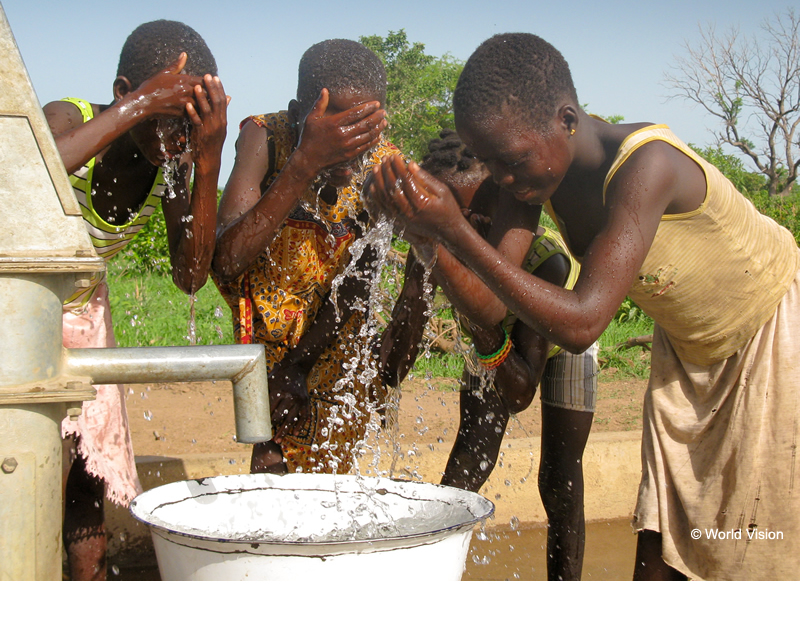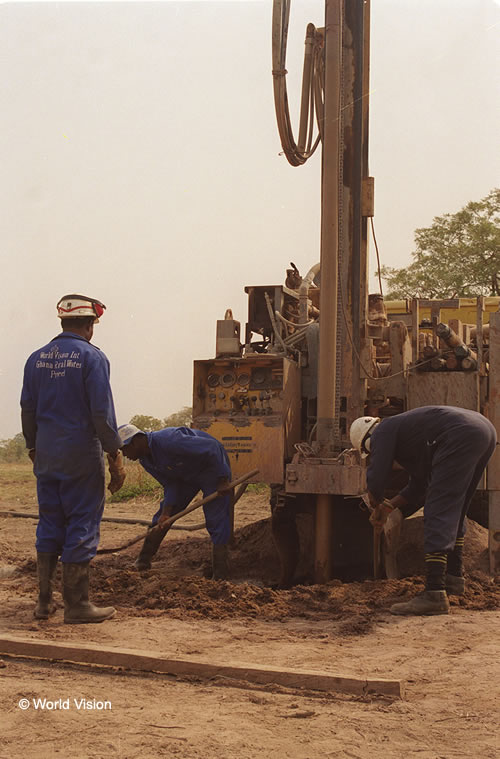Northern Region. Municipality of Zabzugu, Ghana
In collaboration with

October 2014 – September 2015
The region lacks adequate water and sanitation facilities and a lack of awareness in schools and communities. The area, with a high rate of surface water consumption and a notable decrease in the water table, has a geology that makes it difficult and expensive to construct of wells.
Objectives
- Provide sustained access to drinking water.
- Contribute to reducing the incidence of diseases caused by the consumption of non-potable water.
Beneficiaries
3,000 direct
2,512 indirect
32% are women and 36% children

On the ground
With a high rate of surface water consumption and a notable decrease in the water table, the area has a geology that makes constructing wells difficult and expensive.
In the district of Zabzugu, just 38.3% of the population has access to drinking water. Some of its communities have no access other than to nearby brooks and streams from which to fetch water, but they also water their livestock and wash their clothes there, making them dangerous as water sources. Also, the water flow varies greatly depending upon the season and some communities have to walk kilometres to fetch supplies. Additionally, the area’s hydrogeological conditions are complex. To begin with, water is found in deeper layers, some 45 metres down, preventing the manual digging of wells. What’s more, the land is very rocky, making it difficult to find water sources. This means that the building of wells is both complicated and expensive
In detail
In Zabzugu, where 85.3% of the people live in poverty and only 38.3% have access to safe water, the project plans to provide sustained access to 20 litres of drinking water per person per day to 10 communities, thereby benefitting at least 3,000 people. This will help reduce diseases caused by the consumption of unsafe water, one of the main causes of death in the area. To do this, and after performing the studies required to identify the area where water is most needed and where the sources are most reliable, 10 wells will be bored and equipped with water pumps and the superstructures needed for their protection and proper use. To guarantee the project’s sustainability, in each community, a water committee will be trained in the proper management of the wells and in their maintenance, and they will be provided with the tools to do so. Also, two technicians will be trained and equipped (one for every ten communities) to be able to carry out any necessary repairs.
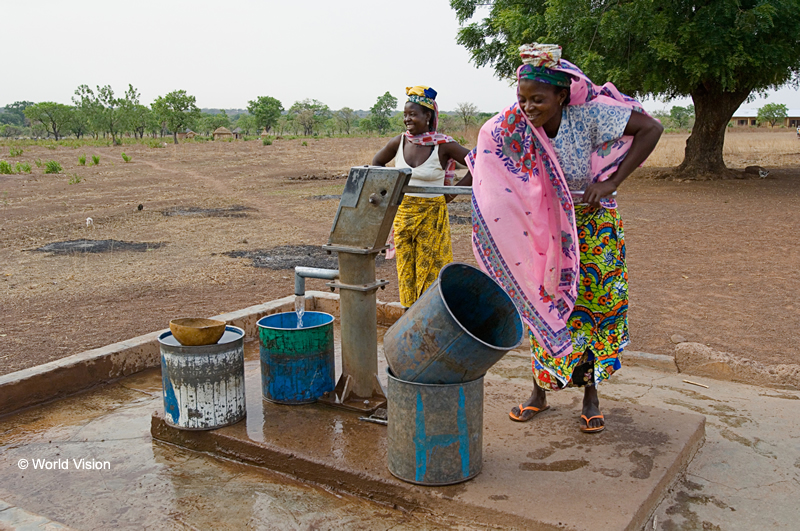
What is the added value of this project compared with others in the area?
Some of the communities that will be benefitting from this project still have no access to any source of drinking water, making the added value total. Others do have a well, but are highly populated (with between 800 and 1,000 inhabitants) and one well is not enough to provide all of them with the 20 litres per person required for drinking and cooking food every day. Additionally, the communities will be trained to maintain and repair the wells, thus bolstering their skill set and making the project sustainable.
What will we be doing?
- We will be ensuring care is provided to those who most need it, as well as their participation in the project, with a mapping of the communities and dissemination.
- We will detect the best water sources, using topographical maps and hydrological research techniques.
- We will bore and fit out 10 wells.
- We will ensure the quality of the supply, with a pumping test and water quality tests.
- We will install hand pumps and protect the wells in accordance with WHO standards.
- We will train the communities in the maintenance and upkeep of the wells.
What social impact will the project have?
The project’s direct impact will be an improvement in the wellbeing—especially the health—of 4,500 people. The project will provide year-round access to drinking water, and its impact will go beyond the supply of this vital resource, improving health, particularly that of children, reducing diseases caused by the use of unsafe water, and nutrition, allowing children to take better advantage of their education and parents to perform better in their daily life. What’s more, the time spent by the population (normally its women and children) on fetching water, will be cut drastically, giving them the chance to study or carry out other tasks, not to mention reducing the risks they face in having to leave their communities in search of water during the dry season.


